Colloidal quantum dots (CQDs) are considered ideal gain materials for low-cost, solution-processed laser diodes due to their tunable emission wavelengths, high photoluminescence quantum yields, and good thermal stability. In recent years, CQD films have demonstrated low-threshold optical-pumped amplified spontaneous emission (ASE) and lasing. However, achieving electrically pumped ASE requires simultaneous realization of high current injection and optical gain exceeding losses within the device.
This presents several key challenges because thermal accumulation resulting from high current injection disrupts the stability of the device and increases the probability of non-radiative recombination of excitons. At the same time, high current introduces additional non-radiative recombination losses caused by multi-exciton effects, while significant high optical losses in the device, such as electrode absorption and insufficient optical field confinement, make it difficult to achieve positive net gain even with population inversion under high current.
To overcome these bottlenecks, further research is needed to address how to achieve efficient current injection, effective thermal management, and strong optical field confinement through synergistic electro-thermal-optical design at the device level, thus advancing electrically pumped surface-emitting ASE from CQDs.
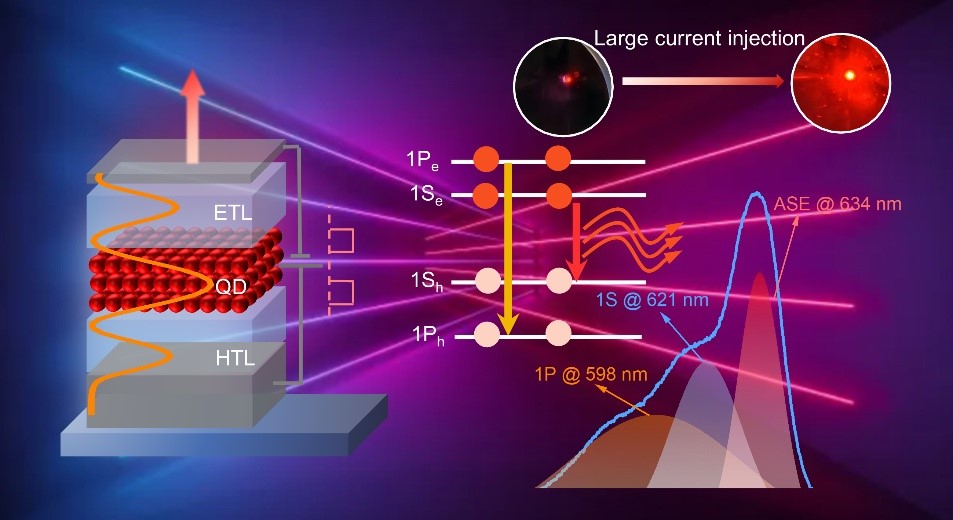
Professor Shuming Chen’s research team from the Department of Electronic and Electrical Engineering at the Southern University of Science and Technology (SUSTech) has successfully developed a novel quantum dot light-emitting diode (QLED) structure, achieving electrically pumped surface emission of ASE from CQDs for the first time. This breakthrough provides a potential solution for the realization of vertical-cavity surface-emitting lasers (VCSELs) based on quantum dots.
Their paper, titled “Electrically pumped surface-emitting amplified spontaneous emission from colloidal quantum dots,” has been published in the journal Light: Science & Applications.
CQDs are considered ideal gain materials for next-generation laser diodes due to their high gain coefficients, solution processability, tunable colors, and low cost. However, the development of electrically pumped lasers, especially for more desirable surface-emitting lasers, has faced two major challenges: insufficient current injection leading to difficulties in achieving population inversion, and high internal optical losses that hinder the attainment of positive net gain. To address these issues, Professor Chen’s team proposed an innovative electro-thermal-optical synergistic design strategy.
To achieve population inversion, which is a necessary condition for laser generation, it is essential to inject a sufficiently large current into the quantum dots. Operating at high current densities generates significant Joule heating, causing the maximum temperature of conventional devices (Figure 1e, left) to spike up to 470 K (Figure 1f, red line), leading to device overheating and failure. To address this issue, the team implemented a comprehensive thermal management strategy focused on spatial, structural, and temporal aspects.
Spatially, they reduced the emission area to just 0.01 mm², significantly decreasing heat generation. Structurally, the devices were fabricated directly on a silicon (Si) heat sink with excellent thermal conductivity, allowing for rapid heat dissipation. Temporally, ultra-short pulse current driving (63 ns) was utilized to prevent the accumulation of heat. Together, these three approaches allowed the device to stably handle an astonishing current density of up to 2000 A cm⁻² at low temperatures (153 K) (Figure 1g). The electroluminescence spectrum clearly showed strong emission from the high energy levels (1P) of the CQDs (Figure 1h), confirming the achievement of population inversion. Calculations indicated that, on average, each quantum dot housed five to six excitons.
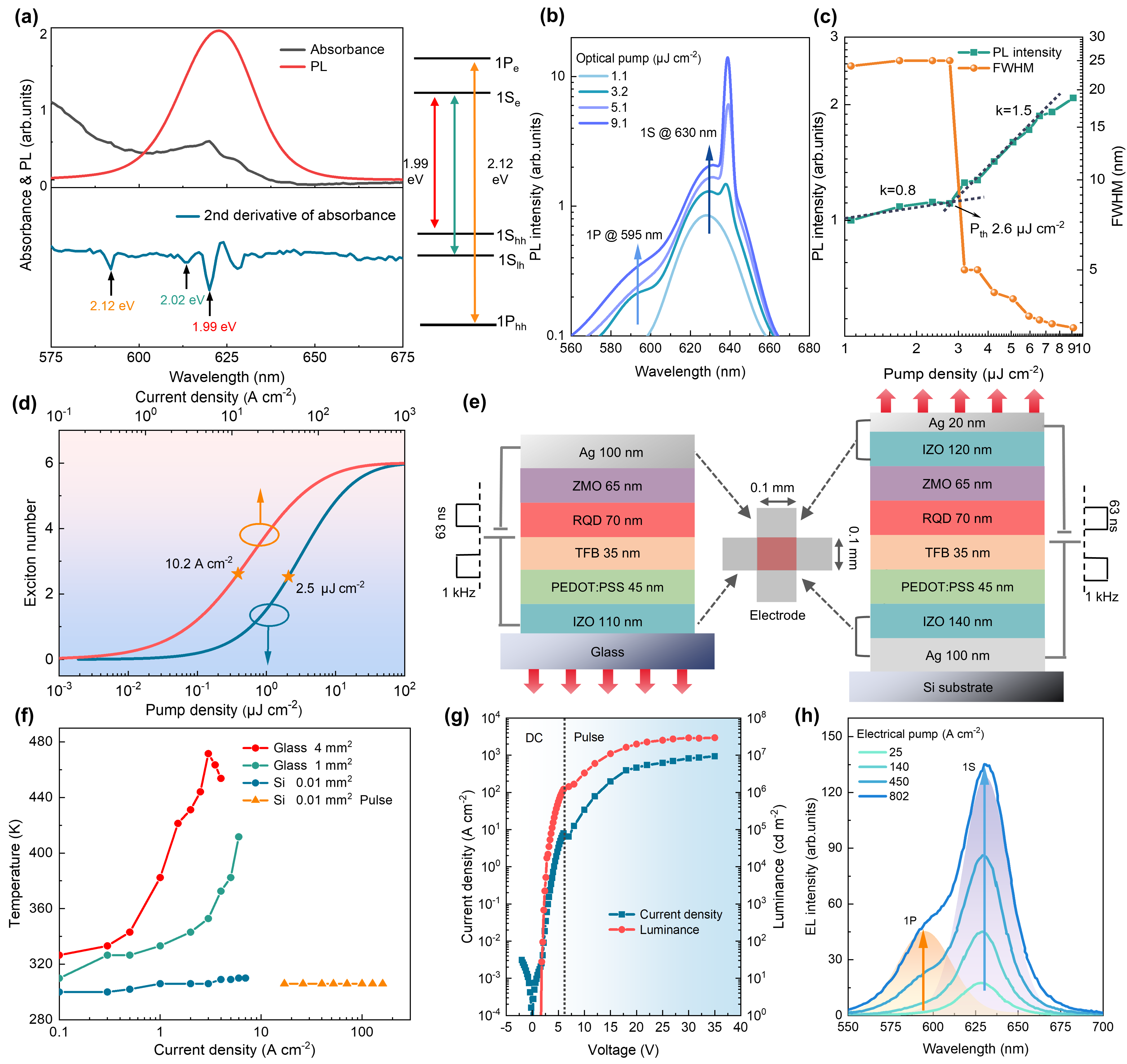
Figure 1. Optical properties of quantum dot gain media and the implementation of high current injection QLEDs
The presence of metallic electrodes within the device can lead to significant optical losses, including absorption and surface plasmon polariton (SPP) losses. In addition, surface-emitting structures requires semi-transparent electrodes, which can weaken optical confinement. To reduce these losses and improve net gain, it is essential to maximize the confinement of the optical field within the CQD gain region. To achieve this, the researchers designed a top-emitting (TE) Fabry-Pérot (FP) cavity structure (Figure 1e, right) that utilizes a silver (Ag) and indium zinc oxide (IZO) composite layer as electrodes. In this configuration, the Ag/IZO layer serves as the highly reflective bottom electrode, while the IZO/Ag layer functions as the top semi-transparent electrode.
Detailed optical analysis revealed that the thick IZO layer almost completely eliminates the SPP optical losses caused by the metal Ag electrode (Figure 2b). Additionally, IZO serves as a phase-regulating layer that localizes the optical field primarily within the CQD gain region (Figure 2e-f). The optical confinement factor of this structure reaches as high as 0.54, which is more than twice that of conventional bottom-emitting (BE) devices, resulting in positive net optical gain that is crucial for producing ASE. The strong localization of the optical field in this structure maximizes the interaction between light and the CQD gain medium, leading to a robust ASE signal generated laterally. This lateral ASE signal is effectively scattered through the CQD layer, ultimately emitting from the vertical direction and forming detectable surface-emitting ASE.
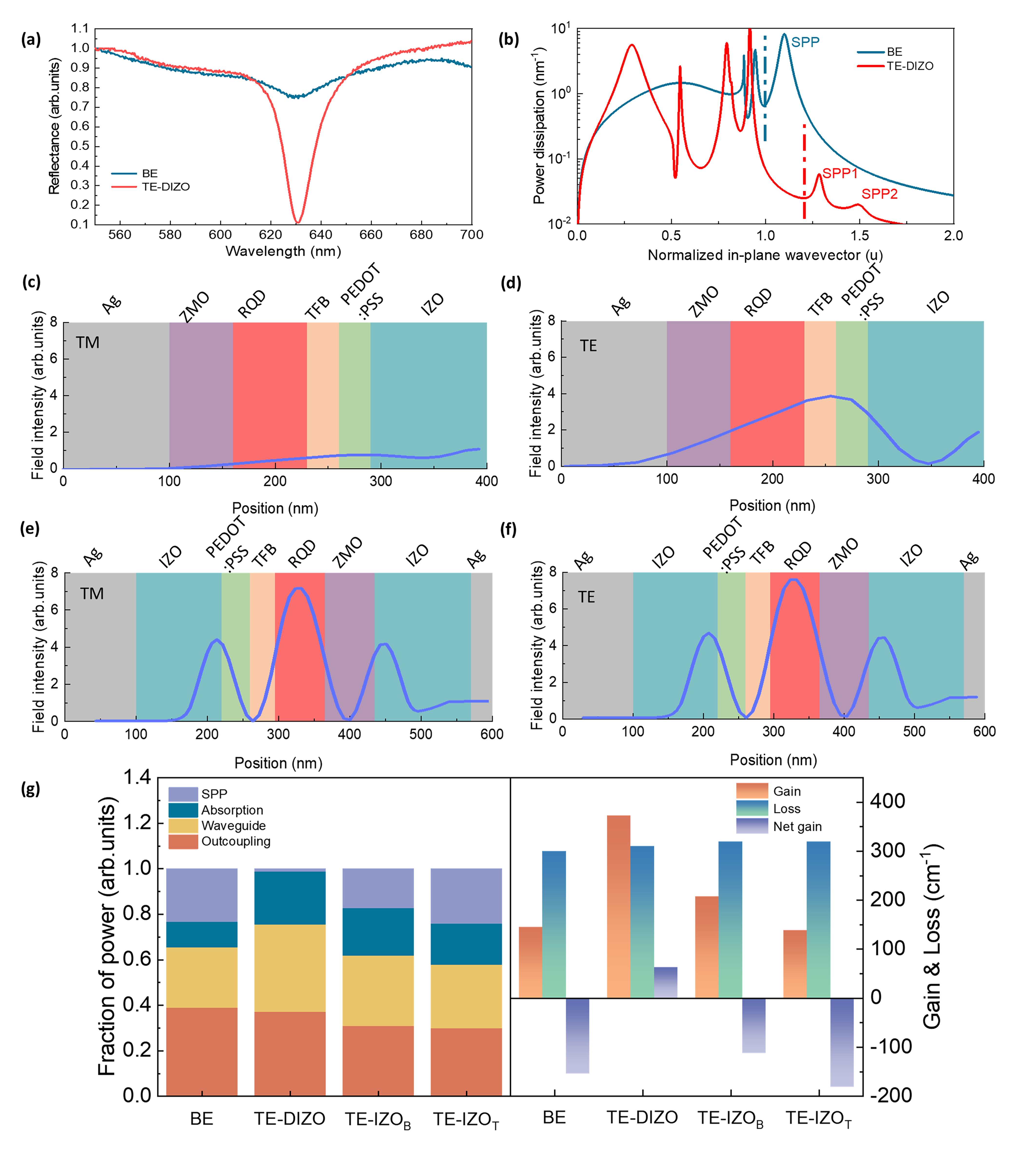
Figure 2. Optical analysis of QLEDs with different structures
Through the synergistic electro-thermal-optical design, they successfully demonstrated electrically pumped surface-emitting ASE in their novel QLED device. At a low temperature of 77 K, surface-emitting ASE signals with a threshold as low as 10 μJ cm⁻² were successfully detected using femtosecond laser pumping (Figures 3a-c). At 153 K, under the application of nanosecond pulse current driving, when the current density reached 94 A cm⁻² (Figures 3d-f), a sharp new peak appeared in the electroluminescence (EL) spectrum at 634 nm. The intensity of this peak increased superlinearly with current density, with the slope k rising from 0.8 to 1.2, and the spectral linewidth significantly narrowed from 24 nm to 15 nm. Based on these three characteristics—the emergence of a new peak, superlinear growth, and linewidth narrowing—it can be concluded that electrically pumped surface-emitting ASE was generated.
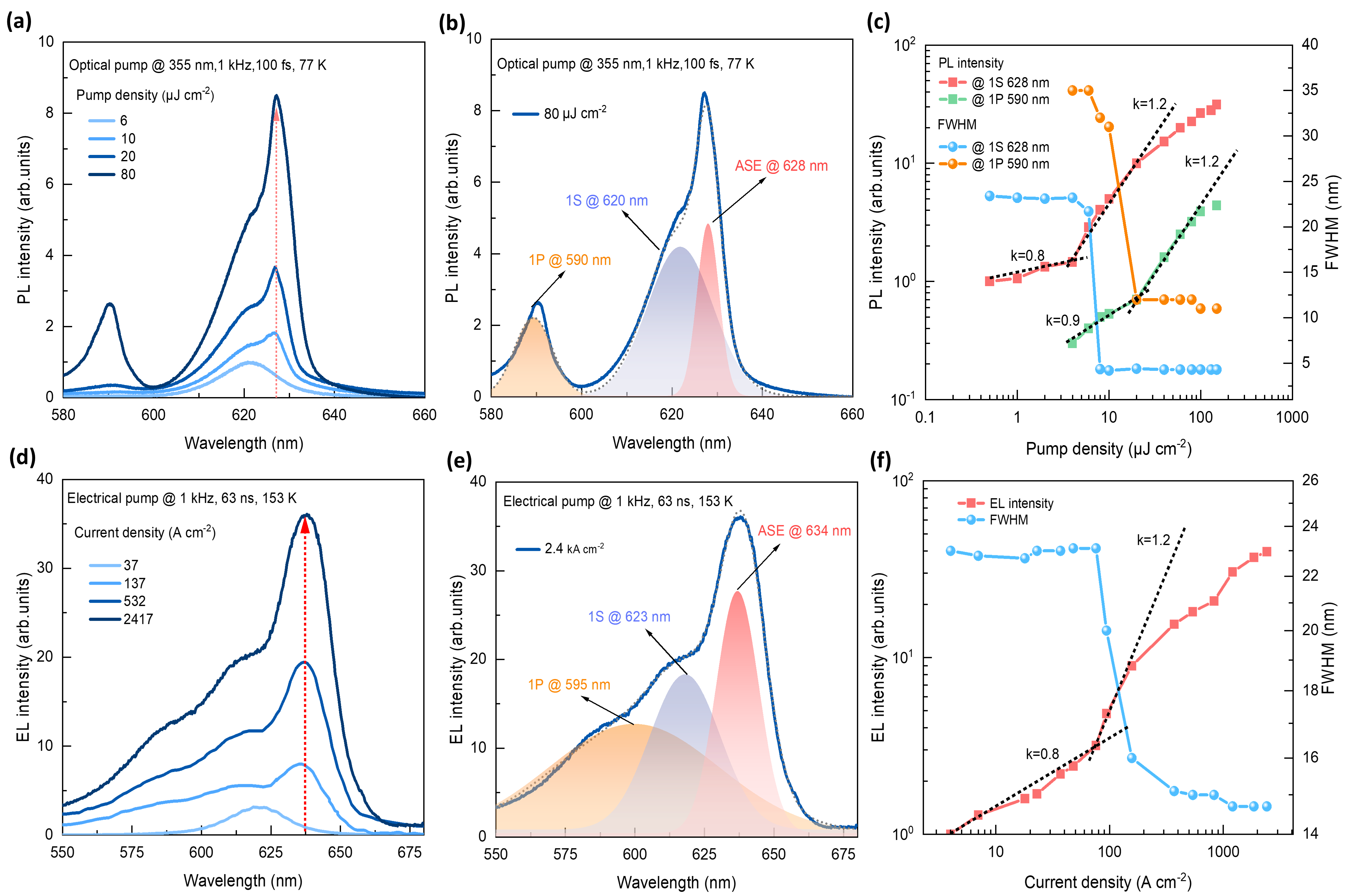
Figure 3. Optical and electrical pumped ASE spectra
The device exhibits a reduced efficiency roll-off in the ASE region (Figure 4a), demonstrating an amplification effect in the light emission at high current densities (Figure 4). Additionally, it displays excellent emission directionality (Figure 4c), significantly surpassing that of traditional bottom-emitting devices. A photograph clearly illustrates the device’s high-brightness directional emission (Figure 4d).
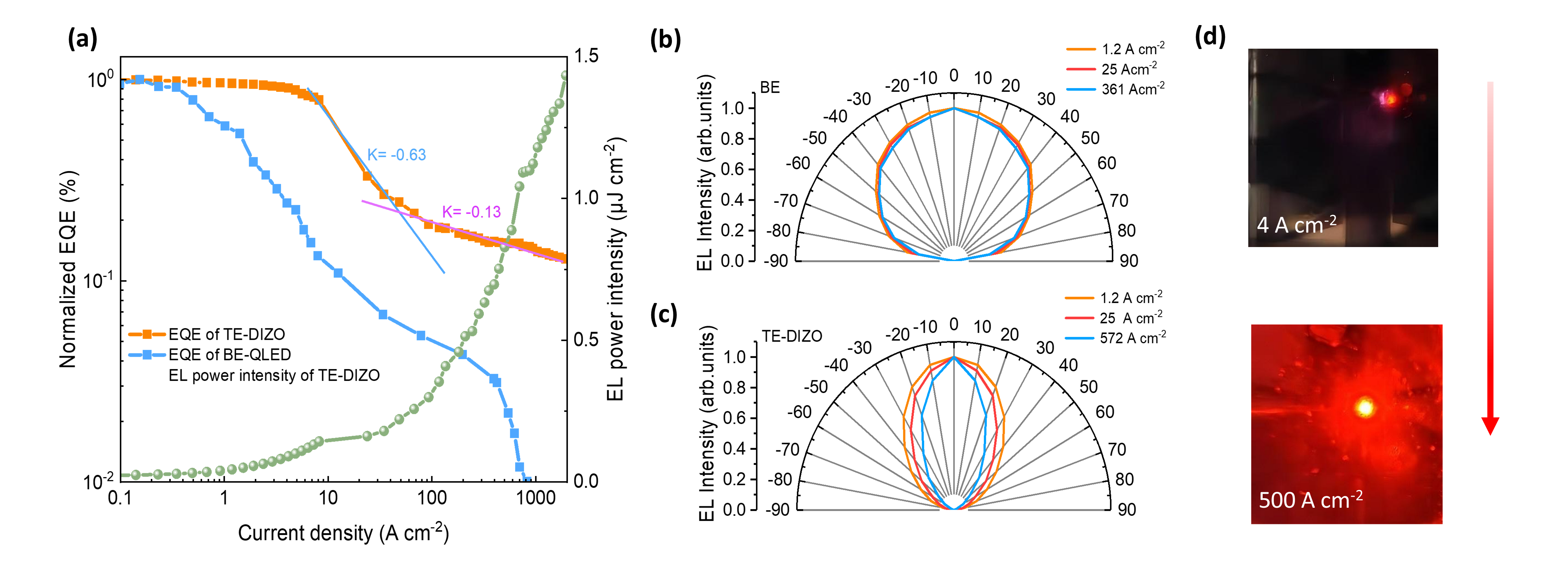
Figure 4. Characterization of the output properties of the device
This study represents the first demonstration of electrically pumped surface-emitting spontaneous radiation amplification using CQD materials. Through the strategy of employing an electro-thermal-optical synergistic design, the core challenge of balancing high current injection with positive net optical gain in QLED devices has been addressed. This work lays the foundation for the eventual development of low-cost, solution-processed quantum dot vertical cavity surface-emitting lasers and establishes a basis for the application of QLEDs in high-speed optical communication, laser displays, sensing, and on-chip optical interconnects.
Doctoral student Fengshou Tian from the Department of Electronic and Electrical Engineering at SUSTech is the first author of this paper, and Professor Shuming Chen is the corresponding author. SUSTech is the first affiliated institution. Other contributors include doctoral students Xuanxyu Zhang, Zhiyuan Ren, and Shan Wang from Professor Rui Chen’s research group at SUSTech.
Paper link: https://doi.org/10.1038/s41377-025-01972-1
To read all stories about SUSTech science, subscribe to the monthly SUSTech Newsletter.
Proofread ByAdrian Cremin, Yifei REN
Photo ByDepartment of Electronic and Electrical Engineering